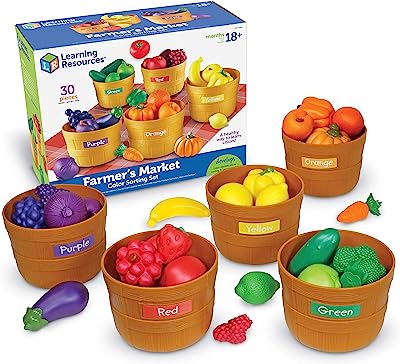
Introduction
Story
The farmers’ efforts paid off in spades, with many reporting higher yields than ever before. Thanks to the farmers’ hard work, the local market is now overflowing with fresh produce, and people from all over the region are coming to buy it.
When asked about their success, the farmers attributed it to a combination of hard work, dedication, and a love for their craft. They also acknowledged that they could not have done it alone and thanked their families, neighbors, and community for their support.
Conclusion
Overall, the farmers’ success is a testament to the importance of agriculture and the vital role that farmers play in feeding the world. As the season comes to a close, the farmers are already planning for the next growing season, eager to continue their tradition of hard work and dedication to their craft.

Introduction
Finding the best farmers’ products requires a combination of several conditions. Here are some of the most important factors to consider when looking for the best farmers’ products:
-
Soil and Climate: The quality of the soil and climate are essential factors that determine the taste and quality of farmers’ products. For example, crops grown in fertile soil and a favorable climate tend to have a better taste and texture.
-
Sustainable Farming Practices: Farmers who use sustainable farming practices are more likely to produce high-quality products. Sustainable practices such as crop rotation, natural pest control, and composting help to maintain the health of the soil, which results in better quality crops.
-
Harvest Time: The timing of the harvest is critical when it comes to getting the best quality produce. Farmers who harvest their crops at the right time, when they are fully ripe and mature, produce better-tasting produce than those who harvest too early or too late.
-
Freshness: The freshness of farmers’ products is crucial when it comes to taste and quality. Products that are freshly harvested and sold soon after have a much better taste than those that have been stored for an extended period.
-
Seasonality: Seasonal produce is often the best tasting, as it is grown in its natural environment and harvested at the right time. Farmers who grow crops that are in season are more likely to produce high-quality products.
-
Traceability: Traceability is another essential factor in finding the best farmers’ products. Knowing where your food comes from and how it was grown is crucial when it comes to ensuring that it is safe, healthy, and of the best quality.
By considering these factors, you can find the best farmers’ products that are not only delicious but also healthy and sustainably produced.
Conclusion
By considering these factors, you can find the best farmers’ products that are not only delicious but also healthy and sustainably produced.

Introduction
Farmers produce a wide variety of products, including crops and livestock. Here are some of the most common types of farmers’ products:
-
Crops: Farmers grow a wide variety of crops, including fruits, vegetables, grains, and legumes. Some common crops include tomatoes, corn, wheat, soybeans, potatoes, carrots, lettuce, and berries.
-
Livestock: Farmers also raise animals for meat, dairy, and eggs. Some common livestock include cattle, pigs, sheep, goats, chickens, and ducks.
-
Dairy Products: Dairy farmers produce milk, cheese, butter, and yogurt from cows, goats, and sheep.
-
Honey: Beekeepers produce honey by collecting nectar from flowers and processing it into honey.
-
Maple Syrup: Maple syrup is produced by tapping maple trees and collecting the sap, which is then boiled down to create the syrup.
-
Flowers: Some farmers grow flowers for sale at farmers’ markets or for use in bouquets and floral arrangements.
-
Herbs: Farmers also grow herbs such as basil, thyme, and rosemary for use in cooking and medicinal purposes.
-
Mushrooms: Some farmers grow mushrooms such as shiitake, oyster, and portobello for sale at farmers’ markets or to supply to restaurants.
-
Grains: Farmers also grow grains such as oats, barley, and quinoa for use in baked goods and other food products.
-
Nuts: Some farmers grow nuts such as almonds, walnuts, and pecans for sale as a snack or for use in cooking.
Conclusion
Overall, farmers produce a diverse range of products that are essential to our diets and economy. By supporting local farmers and buying their products, we can ensure that we have access to high-quality, fresh, and healthy food.

Introduction
Farmers may connect with creditors in various ways, depending on their specific needs and circumstances. Here are some common ways farmers may connect with creditors:
-
Banks and Credit Unions: Farmers may obtain loans from banks and credit unions to finance their farm operations. These financial institutions typically offer a variety of loan products, including operating loans, equipment loans, and real estate loans.
-
Agricultural Lenders: Some lenders specialize in providing financing specifically for farmers and ranchers. These agricultural lenders may offer unique loan products, such as crop loans, livestock loans, and agribusiness loans.
-
Government Programs: Farmers may be eligible for loans or other financial assistance through government programs, such as the U.S. Department of Agriculture’s Farm Service Agency (FSA) or the Small Business Administration (SBA).
-
Trade Credit: Farmers may also obtain credit from suppliers and vendors when purchasing inputs such as seed, fertilizer, and equipment. Trade credit allows farmers to pay for inputs after they have been used, providing a short-term financing option.
-
Private Investors: Some farmers may seek out private investors to provide funding for their farm operations. These investors may be individuals or companies looking to invest in agriculture.
Conclusion
Overall, farmers may connect with creditors through a variety of channels, including traditional lenders, government programs, trade credit, and private investors. By obtaining financing, farmers can purchase the inputs and equipment needed to produce their crops and livestock and help ensure the success of their farm operations.



